
The Druze, who call themselves al-Muwaḥḥidūn, are an Arab and Arabic-speaking esoteric ethnoreligious group from West Asia who adhere to the Druze faith, an Abrahamic, monotheistic, syncretic, and ethnic religion whose main tenets assert the unity of God, reincarnation, and the eternity of the soul.

Walid Kamal Jumblatt is a Lebanese politician who was the leader of the Progressive Socialist Party from 1977 until 2023. A Druze and former militia commander, Jumblatt led the Lebanese National Resistance Front and allied with the Amal Movement during the Lebanese Civil War. He worked closely with Suleiman Frangieh to oppose Amine Gemayel's rule as president in 1983. After the civil war, he initially supported Syria but later led an anti-Assad stance during the start of the Syrian Civil War. He is still active in politics, most recently leading his party, the Progressive Socialist Party (PSP) in the 2022 Lebanese general election.
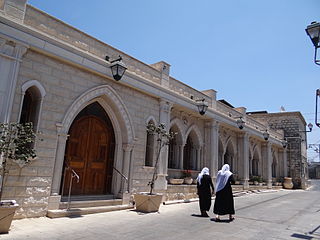
Daliyat al-Karmel is a Druze town located on Mount Carmel in the Haifa District of Israel, around 20 km southeast of Haifa. In 2022 its population was 18,001.
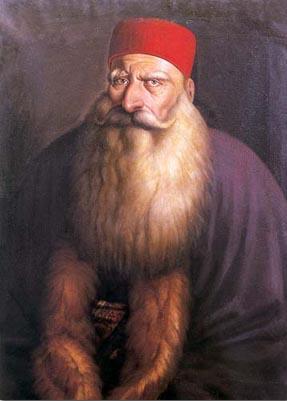
Bashir Shihab II was a Lebanese emir who ruled the Emirate of Mount Lebanon in the first half of the 19th century. Born to a branch of the Shihab family which had converted from Sunni Islam, the religion of previous Shihabi emirs, he was the only Maronite ruler of the Mount Lebanon Emirate.
The al-Atrash, also known as Bani al-Atrash, is a Druze clan based in Jabal Hauran in southwestern Syria. The family's name al-atrash is Arabic for "the deaf" and derives from one the family's deaf patriarchs. The al-Atrash clan migrated to Jabal Hauran in the early 19th century, and under the leadership of their sheikh (chieftain) Ismail al-Atrash became the paramount ruling Druze family of Jabal Hauran in the mid-19th century, taking over from Al Hamdan. Through his battlefield reputation and his political intrigues with other Druze clans, Bedouin tribes, Ottoman authorities and European consuls, Ismail consolidated al-Atrash power. By the early 1880s, the family controlled eighteen villages, chief among which were as-Suwayda, Salkhad, al-Qurayya, 'Ira and Urman.
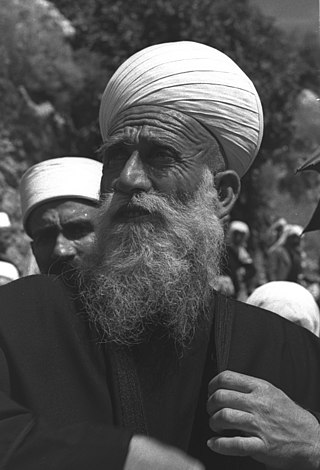
Amin Tarif was the qadi, or spiritual leader, of the Druze in Mandatory Palestine from 1928 and then Israel until his death in 1993. Such was the esteem in which he was held among Druze internationally that Sheikh Amin was regarded by many within the community as the preeminent spiritual authority in the Druze world.
The Battle of Ain Dara occurred in the village of Ain Dara, in Mount Lebanon in 1711, between the Qaysi and Yamani, two rival tribo-political factions.

Rashaya, Rachaya, Rashaiya, Rashayya or Rachaiya, also known as Rashaya al-Wadi or Rachaya el-Wadi, is a town of the Rashaya District in the west of the Beqaa Government of Lebanon. It is situated at around 1,200 metres (3,900 ft) above sea level on the western slopes of Mount Hermon, south east of Beirut near the Syrian border, and approximately halfway between Jezzine and Damascus.

The Ottoman Empire nominally ruled Mount Lebanon from its conquest in 1516 until the end of World War I in 1918.

Nabi Shuʿayb, known in English as Jethro's tomb, is a religious shrine west of Tiberias, in the Lower Galilee region of Israel, containing the purported tomb of prophet Shuayb, identified with the biblical Jethro, Moses' father-in-law. The complex hosting the tomb is the most important religious site in the Druze religion. A Druze religious festival takes place in the shrine every year in April.
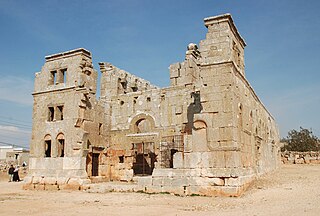
Qalb Loze is a Druze village in northwestern Syria, administratively part of the Idlib Governorate located about 35 kilometres (22 mi) west of Aleppo. It is situated near the border with Turkey, in the A'la Mountain and is part of an area known as the "Dead Cities". According to the Syria Central Bureau of Statistics (CBS), Qalb Loze had a population of 1,290 in the 2004 census.
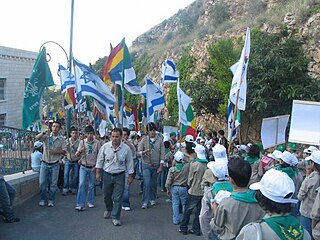
Israeli Druze or Druze Israelis are an ethnoreligious minority among the Arab citizens of Israel.
The 1838 Druze revolt was a Druze uprising in Syria against the authority of Ibrahim Pasha and effectively against the Egypt Eyalet, ruled by Muhammad Ali. The rebellion was led by Druze clans of Mount Lebanon, with an aim to expel the Egyptian forces, under Ibrahim Pasha considering them as infidels. The revolt was suppressed with a bitter campaign by Ibrahim Pasha, after a major Druze defeat in the Wadi al-Taym, and the Egyptian rule effectively restored in Galilee and Mount Lebanon with a peace agreement signed between the Egyptians and Druze leaders on July 23, 1838.
The following is a timeline of the history of the city of Beirut, Lebanon.
Wadi al-Taym, also transliterated as Wadi el-Taym, is a wadi that forms a large fertile valley in Lebanon, in the districts of Rachaya and Hasbaya on the western slopes of Mount Hermon. It adjoins the Beqaa Valley running north to south towards the Jordan Valley where it meets the northwest corner of Lake Huleh. Watered by the Hasbani river, the low hills of Wadi al-Taym are covered with rows of silver-green olive trees with the population in the area being predominantly Druze and Sunni, with a high number of Christians, mostly Greek Orthodox. Wadi al-Taym is generally considered the "birthplace of the Druze faith".
The Druze power struggle of 1658–1667 was one of the most violent episodes of tribal disputes during Ottoman rule in the Levant. The conflict erupted between rebel and pro-Ottoman Druze factions over succession of the Maani rule.
Falougha - Khalwat Falougha is a municipality in the Baabda District of Mount Lebanon Governorate, Lebanon. The municipality consists of the villages of Falougha and Khalwat Falougha. It is 35 kilometers east of Beirut. Falougha - Khalwat Falougha has an average elevation of 1,250 meters above sea level and a total land area of 1,563 hectares. In 2016, Falougha had 3,400 registered voters while Khalwat Falougha had 600. There is a public school in the village with 150 students as of 2016 and a local hospital with thirty beds. There are seven companies that each employ over five employees operating in Falougha. Falougha has a mixed population of Druze and Christians from the Maronite, Melkite and Greek Orthodox denominations, while Khalouat Falougha's inhabitants are entirely Druze.

Druze in Syria is a significant minority religion. According to The World Factbook, Druze make up about 3.2 percent of the population of Syria, or approximately 700,000 persons, including residents of the Golan Heights. The Druzites are concentrated in the rural, mountainous areas east and south of Damascus in the area known officially as the Jabal al-Druze.
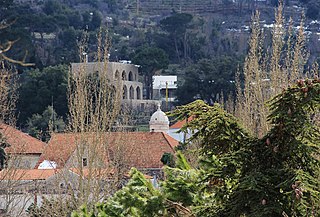
Christianity and Druze are Abrahamic religions that share a historical traditional connection with some major theological differences. The two faiths share a common place of origin in the Middle East and are both monotheistic. Christian and Druze communities share a long history of interaction dating back roughly a millennium, particularly in Mount Lebanon. Over the centuries, they have interacted and lived together peacefully, sharing common social and cultural landscapes, despite occasional exceptions. Moreover, Druze beliefs, scriptures and teachings incorporate several elements from Christianity.













